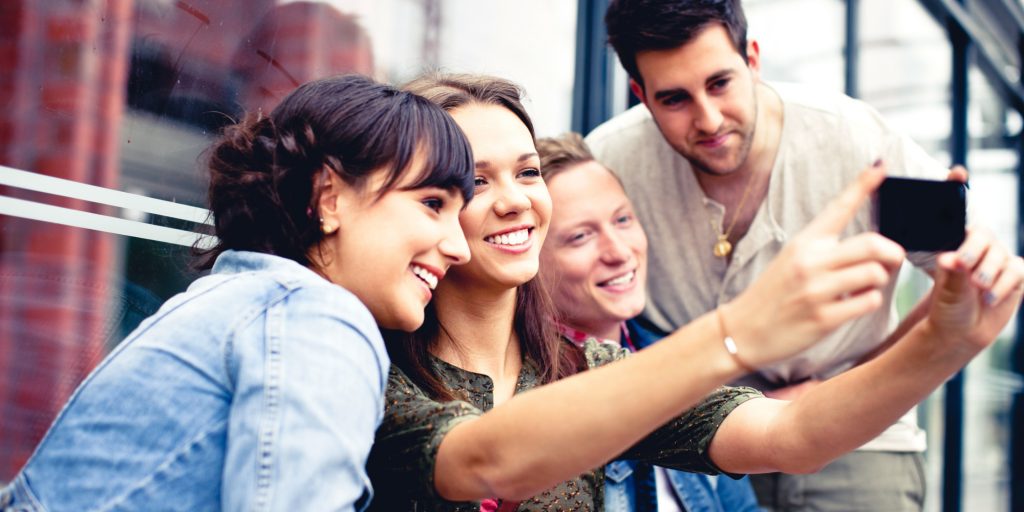 The ‘selfie’ – a self-portrait photograph that is typically taken with a Smartphone and then uploaded to social media.
The ‘selfie’ – a self-portrait photograph that is typically taken with a Smartphone and then uploaded to social media.
Photo sharing has become part of our cultural mainstream. Thanks to smartphones with reverse-style cameras, the selfie has now caught on as the new full-blown ‘phenomenon’. The popularity of the selfie simply speaks to the growing dominance of social media and photo sharing.
Taking a selfie isn’t exactly challenging. The popularity of selfies and their corresponding hashtags provide an easy advertising option for brands looking to create more personal relationships with consumers. Every smartphone features a quality front-facing camera, and even if the selfie is as narcissistic as critics say, there’s no denying its power as a marketing tool.
Selfies are about “branding yourself” as much as they are about brands…think images of famous people holding or using assorted products.
And so, brands, celebrities and even charities have been jumping on board the selfie bandwagon.
Case in point: The #nomakeupselfie has been one of the latest selfie campaigns to go viral, with thousands of women around the world sharing photos of themselves without makeup to raise awareness of and funding for breast cancer research.
Dove recently launched the “honest selfie” campaign that challenges young girls to upload an honest selfie and have their mothers do the same. These photos were then uploaded to a gallery on a website, where viewers were encouraged to debate what beauty is using the social media hashtag #beautyis. This is a great example of a business providing an avenue for users to share their thoughts, feelings and selfies on social media.
Producers from the popular television series The Walking Dead introduced a branded application called ‘Dead Yourself’, that let fans of the television show ‘zombify’ their selfie picture and share the image online using the hashtag #deadyourself. The app also includes a “Bite a Friend” feature which lets users turn a friend’s selfie into a photorealistic zombie. This is a great example of a fun way to engage your audience and create buzz around your brand.
The creators of the ‘Dead Yourself’ application knew that their target audience was engaged with the television show and used this to create a product that would resonate with their audience.
Other businesses have held contests that encourage fans and followers to take photos of themselves with particular products. Users posted these photos on Facebook, Twitter or Instagram with a particular hashtag, giving the business increased reach across multiple social media platforms. Some businesses have also offered discounts or rewards for users that post selfies engaging with their products.
To successfully build trust, loyalty and advocacy through social media, marketers need to think outside the bounds of the traditional advertising relationship. A selfie campaign has the potential to be a unique and relevant tactic for businesses to encourage their audience to engage with their brand.
In our next blog, we’ll explain how you can leverage the interest around the selfie in your marketing plan and we’ll provide tips on how to run a successful ‘selfie’ campaign.
Visit our website for more information on how we can improve your brand’s marketing and awareness at www.cmgmediaagency.com
